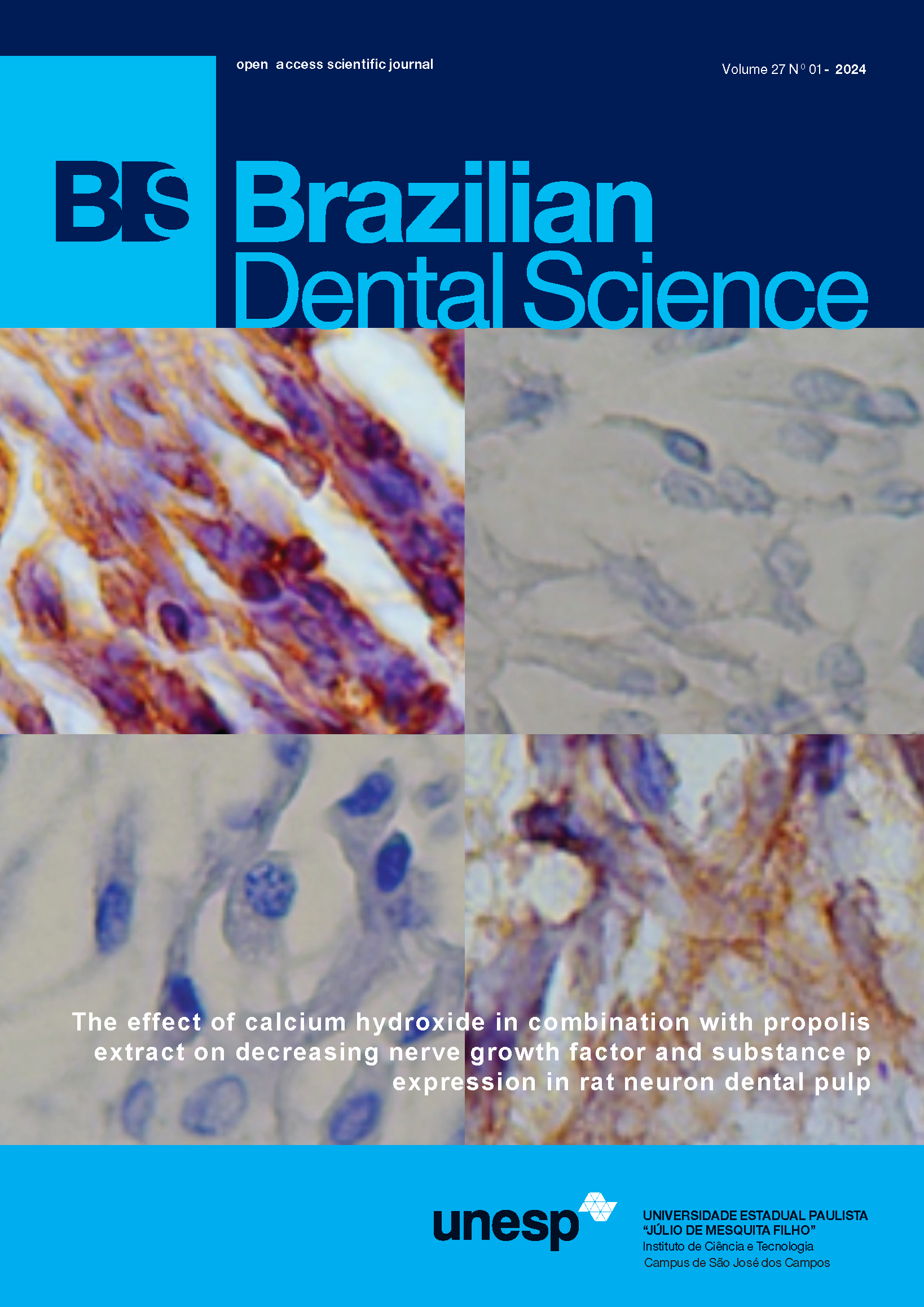Influence of surface treatments in flexural strength and superficial topography of a lithium disilicate ceramic
DOI:
https://doi.org/10.14295/bds.2019.v22i3.1678Abstract
The aim of the study was to evaluate the influence of different surface post-etching treatments in flexural strength, contact angle and surface roughness of a lithium disilicate ceramic. 60 bars (16x2x4mm) were divided in six groups (n=10): C, no treatment; HF, hydrofluoric acid for 20s (HF) + washing (60s), drying (30s); HFL, HF + washing (60s), drying (30s) and luting; HFNL, HF + washing (60s) + neutralization with sodium bicarbonate (SB) for 40s + washing (5s), drying (30s) and luting; HFUL, HF + washing (60s) + ultrasonic bath (UB) for 4 min, drying (30s) and luting; HFNUL, HF + washing (60s) + SB (40s) + UB (4 min) and luting. The bars were submitted to three-points flexural strength test. To analyze roughness and contact angle 25 ceramic blocks (12x7x7 mm) were divided into five groups (n=5): C - no treatment; HF - HF ; HFU - HF and UB for 5 min ; HFN - HF and SB; HFNU - HF, UB and SB. A scanning electron microscope (SEM) analysed the surface of the samples. ANOVA one-way statistical analysis was done for comparison of results. There was no statistical difference for flexural strength (p-value=0.15) and for surface roughness (p-valor=0.15). However, it was obtained statistically significant difference for contact angle (p-valor=0.00). SEM images showed precipitates after the acid etching, which were removed by post-etching treatments. It can be concluded that the different post-etching surface treatments did not increase the flexural strength, surface roughness and ceramic wetting, but it influenced the SEM images.




